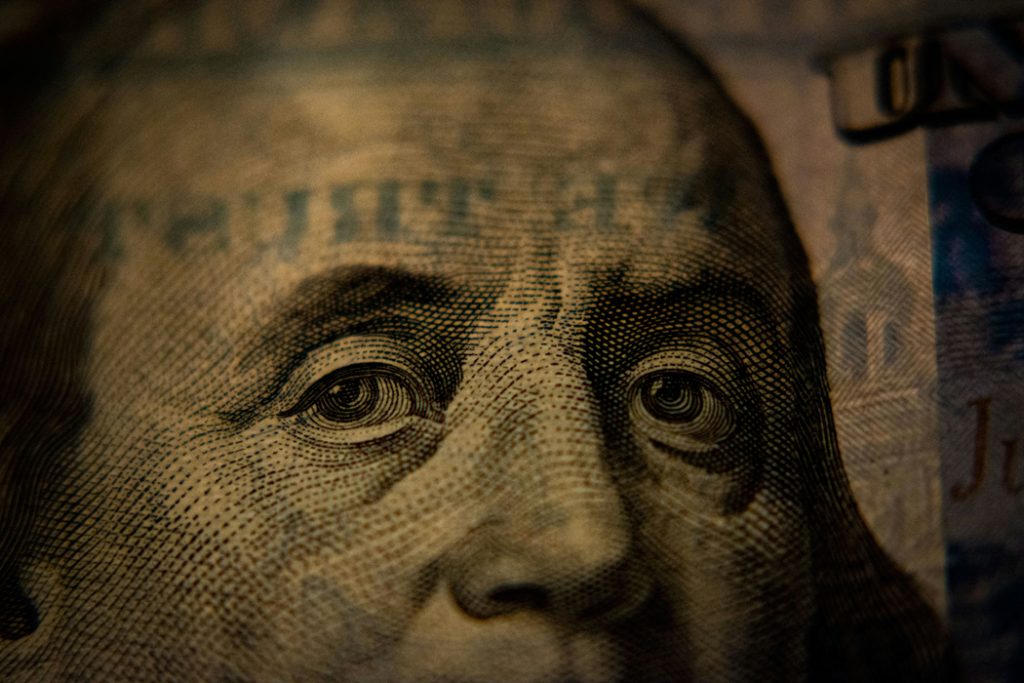
Sometime in high school, my parents told me that there were two topics that you should never discuss in polite company: religion and politics. And while I adopted that maxim as a behavioral strategy, I didn’t really understand why until relatively recently.
In both subjects, people hold very strong beliefs, often without rationale, and are often not open to discussing them. For that reason, discussions about religion or politics are prone to end in division, anger, shouting—and sometimes even death. Hence, neither subject is suitable for polite company.
When I last wrote on the correlation between the economy and political parties back in 2020, I got some angry emails declaring that I was either just plain wrong, or even worse, I was a liar.
To deal with the latter accusation, I will give you, the reader, my sources in this article so that you can check and see if what I say here is accurate or not. And then you can form your own opinion as to whether I was wrong or not.
This November, you are going to make a choice about who you think is better for the economy, a Republican or a Democrat. I have no expertise about defense, security, education, or immigration, etc., so I will restrict the discussion to the economy.
But first we need to review a little history. At one time, the Republican Party was the radical left. One of the great Republican presidents, Teddy Roosevelt, was known as the “trust buster” as he battled the nation’s super wealthy—Rockefeller, J.P. Morgan, et al. In 1912, failing to get the Republican nomination, Teddy Roosevelt formed a new party nicknamed the Bull Moose Party, but whose official name was the Progressive Party. This split the Republican vote, enabling Woodrow Wilson, the first progressive Democratic candidate for president, to win with only 41 percent of the vote. With that election, the two major parties of our country switched sides. The Republicans became the conservative party and the Democrats the liberal party.
In 1920, Warren G. Harding became the first conservative Republican elected to the White House. With Harding, then, began the modern Republican Party. But since he died in office and was succeeded by his vice president, Calvin Coolidge, this 100-year lookback at the two major parties begins with Coolidge.
Calvin Coolidge was president from 1923 to 1929. How did the economy do during his presidency? Looking on Wikipedia, we see two recessions during his presidency, from May 1923 to June 1924 and from October 1926 to November 1927 (Wikipedia.org).
In 1928, Republican Herbert Hoover was elected and took office in March 1929. Unfortunately, the economy did much worse while he was in office. The Great Depression started in August 1929 and lasted until March 1933.
So the country decided to give the Democrats a chance. Franklin Roosevelt was inaugurated in early 1933 and stayed in office until his death in April 1945. During that 12 years, there were two recessions, one in 1937 and another just before his death in 1945. (For all of these recession dates, I’m referring to the same Wikipedia article, which cites sources for all recessions listed therein: Wikipedia.org).
The next recession comes during the Truman administration in 1948. Truman was a Democrat.
And like a pendulum, the presidency swung back to the Republicans, and Eisenhower was inaugurated in early 1953 and oversaw recessions in 1953, 1957 and 1960.
After Eisenhower, the political pendulum swung back to the Democrats with the Kennedy and Johnson administrations, lasting until January of 1969. During this eight-year period, there were no recessions.
The next recession didn’t occur until Republican Richard Nixon came into office. During the Nixon/Ford years, there were two recessions, one in 1969 and one in 1973.
The nation briefly turned back to the Democrats with the one-term Jimmy Carter from 1977 to January 1981. During that time, there was one recession that began in January 1980. That’s the last recession during a Democratic administration—40 years ago.
If you’re a Republican and you’re still reading this, you probably don’t like me much by now, but, please, before you shoot the messenger, read the data at the previously supplied link (Wikipedia.org).
Now, let’s summarize. Over the last 100 years, Republicans have held the White House for 48 years and Democrats 52 years (Britannica.com). And during the last 100 years, there have been 16 recessions and 1 depression. Twelve of those recessions and the Great Depression started during Republican administrations. Just look at the dates.
And not only did 75 percent of the recessions of the last 100 years start during Republican administrations, but there was at least one recession during every Republican administration. For a full century it has been automatic. Elect a Republican president and have a recession.
How do we explain this?
That is going to take a bit of time, so please tune in next month for Part II.
Hal Masover is a Chartered Retirement Planning Counselor and a registered representative. His firm, Investment Insights, LLC is at 508 N 2nd Street, Suite 203, Fairfield, IA 52556. Securities offered through, Cambridge Investment Research, Inc, a Broker/Dealer, Member FINRA/ SIPC. Investment Advisor Representative, Cambridge Investment Research Advisors, Inc., a Registered Investment Advisor. Investment Insights, Inc & Cambridge are not affiliated. Comments and questions can be sent to hal.masover@emailsri.com These are the opinions of Hal Masover and not necessarily those of Cambridge, are for informational purposes only, and should not be construed or acted upon as individualized investment advice. Investing involves risk. Depending on the types of investments, there may be varying degrees of risk. Investors should be prepared to bear loss, including total loss of principal. Past performance is no guarantee of future results.
Indices mentioned are unmanaged and cannot be invested in directly.
